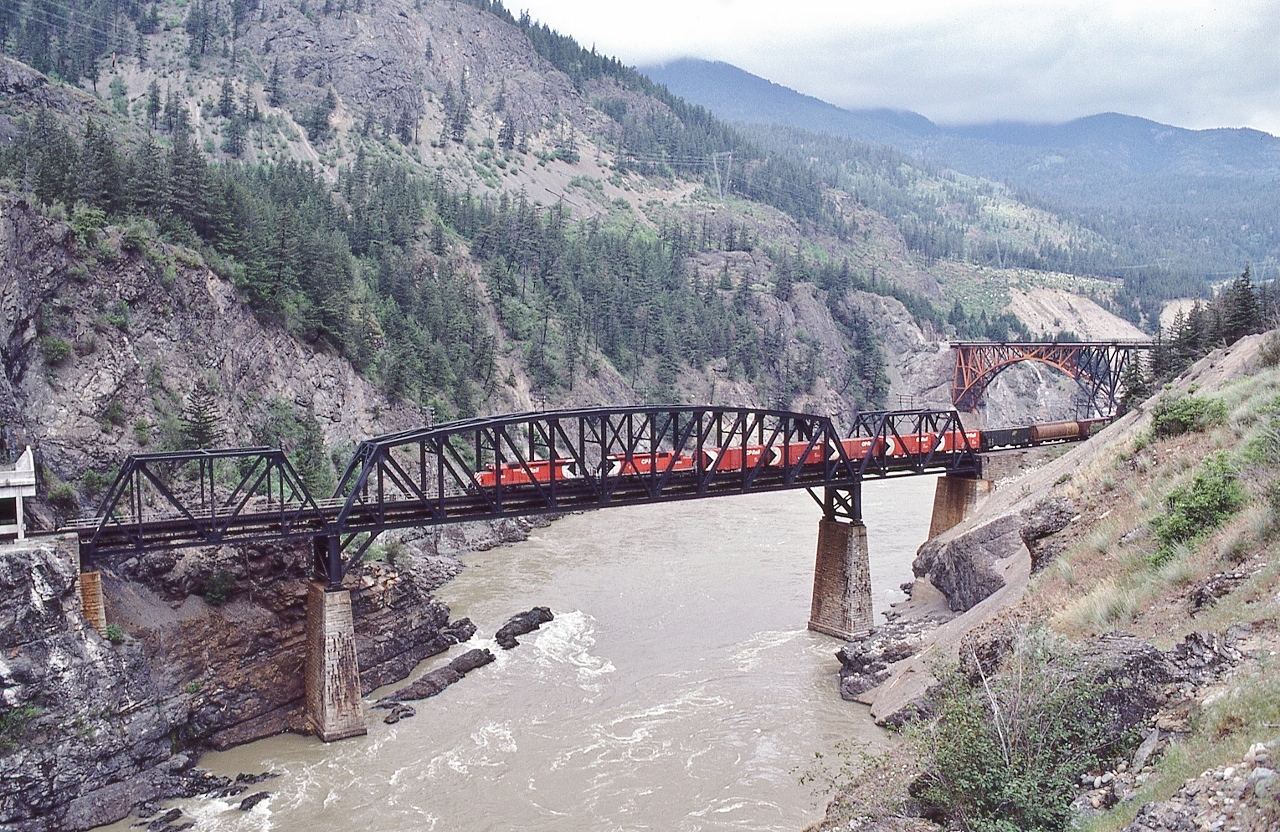|
Caption:
The bridges of Cisco.
The Multi-Mark is alive and well.
And SD40's ruled
Westbound on CP Rail, near (what remains of) Lytton, B.C., May 13, 1980 Kodachrome by S.Danko
Noteworthy: The Kodachrome was exposed prior to the directional running co-operation agreement:
Currently the CP line is eastbound, CN line is westbound (Executive and Business Trains excepted).
Engineering: for those that need to know, from Wikipedia
The Canadian National bridge is a truss arch bridge, 247 metres (810 ft) long and 67 metres (220 ft) high. The north-west end of the bridge abuts into a near-vertical rock face. The south-east end of the bridge crosses the CPR tracks about 100 metres (330 ft) north of the CPR bridge.
The Canadian Pacific bridge is a 3-span, 160-metre-long (520 ft) truss bridge. There are two short Pratt truss spans at each end of the longer Parker truss main span. The south end of the bridge (on the west bank of the river) enters directly into the Cantilever Bar Tunnel, in the side of the Cisco Bluff.
The original span was built by Joseph Tomlinson and was pre-fabricated in England and shipped to Canada in 1883.The bridge – then one of the longest cantilever spans in North America – was then constructed by the San Francisco Bridge Company. When the current bridge was built at Cisco in 1910, the original span was moved to the Esquimalt and Nanaimo Railway on Vancouver Island to cross the Niagara Creek Canyon (48.4825°N 123.5574°W), where it is still in use (now by the Southern Railway of Vancouver Island).
sdfourty
|



Nice. Certainly a neat location to see in person.
Here’s a link to an article and photos of the previous bridge. https://historicbridges.org/bridges/browser/?bridgebrowser=britishcolumbia/niagaracanyon/